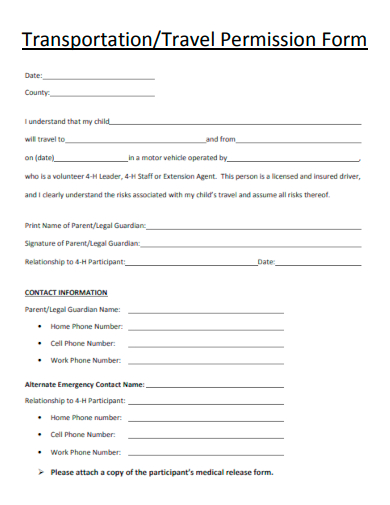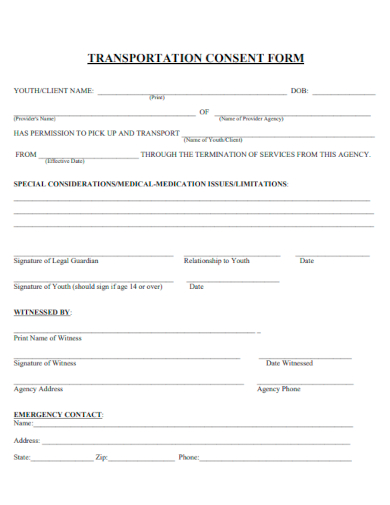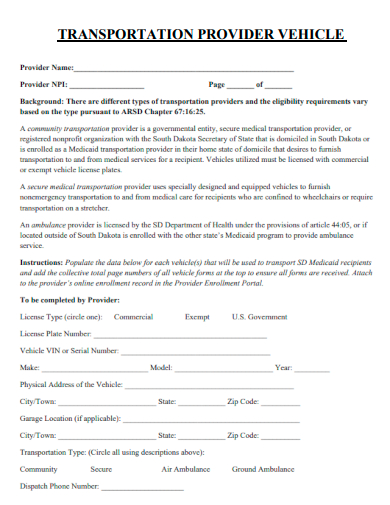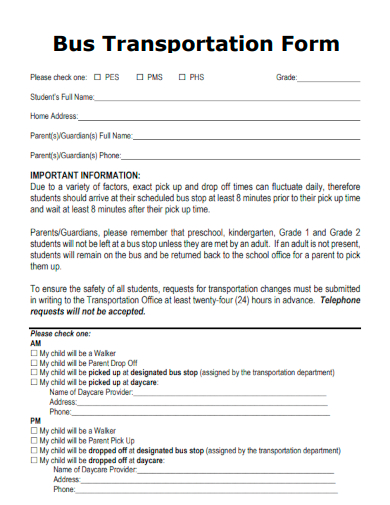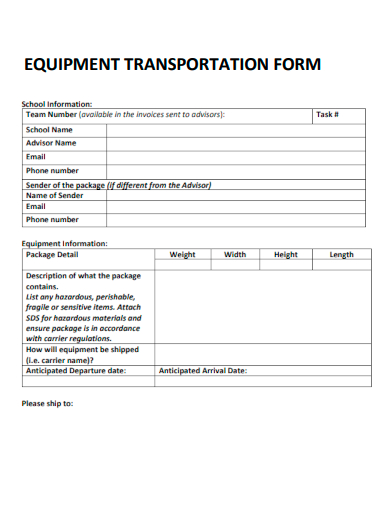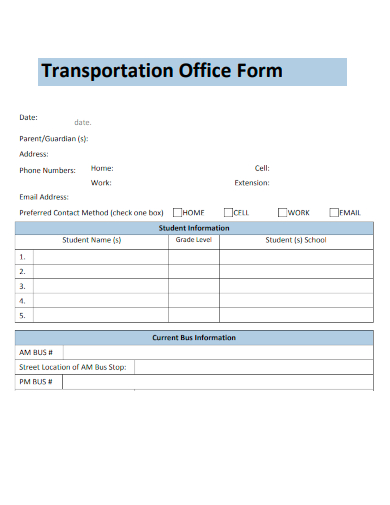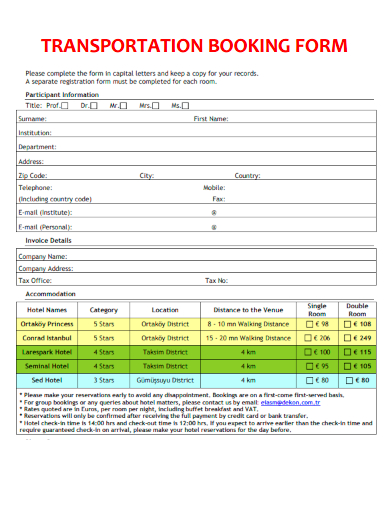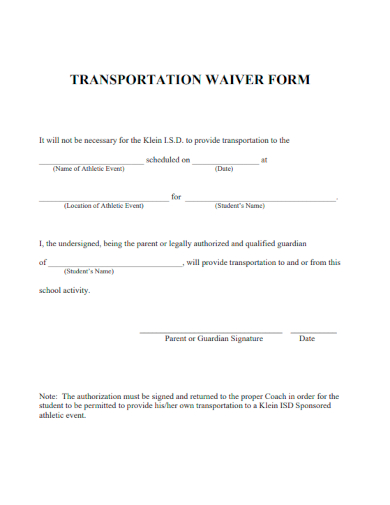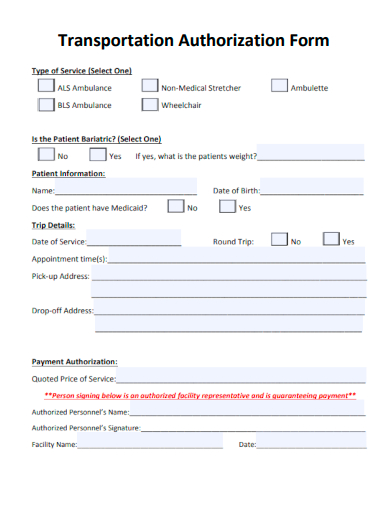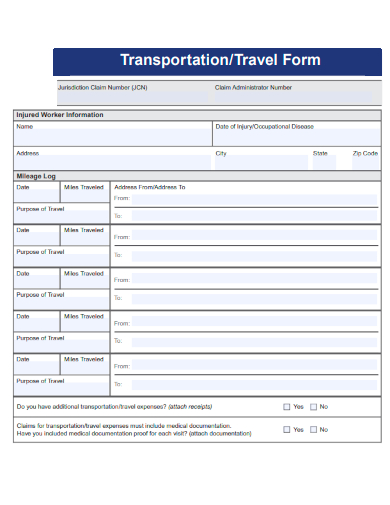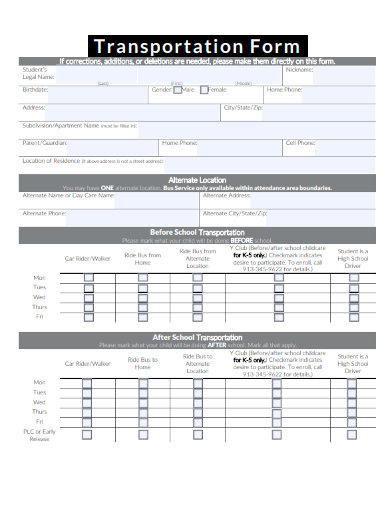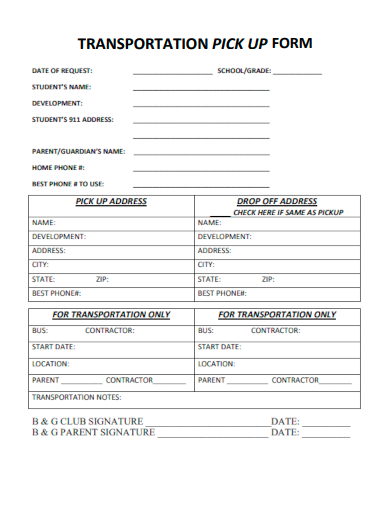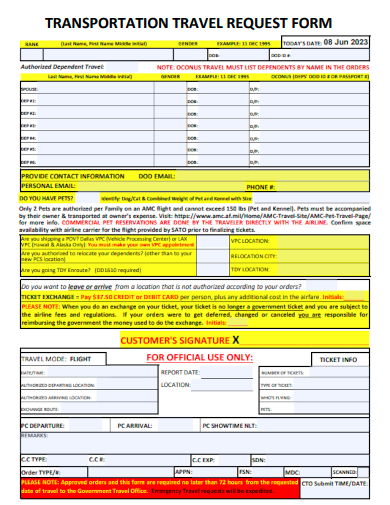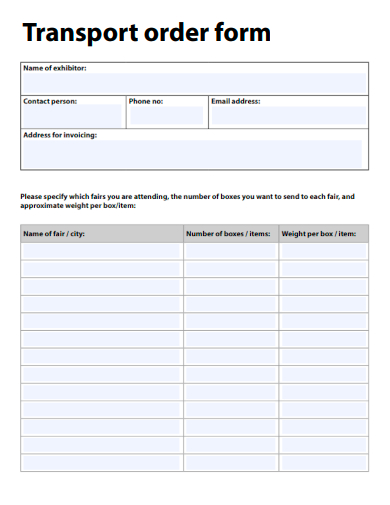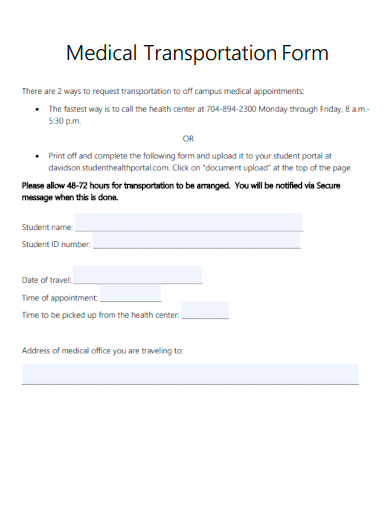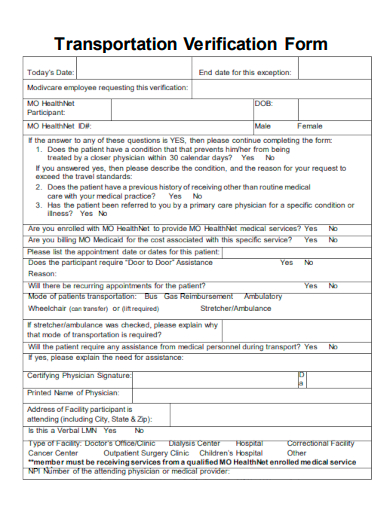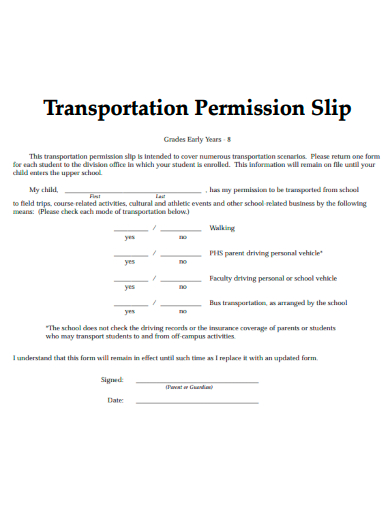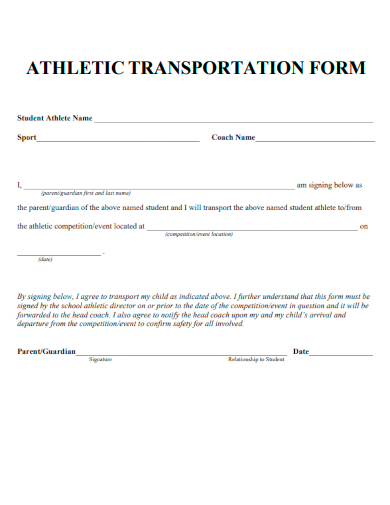In a world where swift travel meets intricate logistics, precision and clarity become essential. Our transportation and logistic form is tailored to capture every nuance of your journey and shipment needs. Whether you’re traveling by road, rail, air, or sea, or orchestrating a complex cargo movement, this form is your ally, ensuring that every detail is meticulously addressed for a smooth experience.
FREE 29+ Transportation Form Samples
1. Bus Transportation Form Template
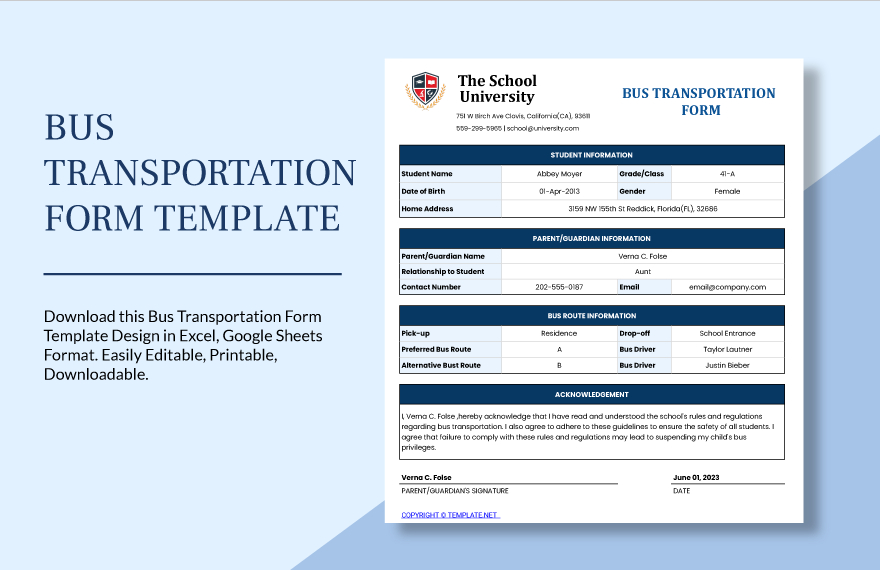
2. Transport and Logistics Route Evaluation Form Template
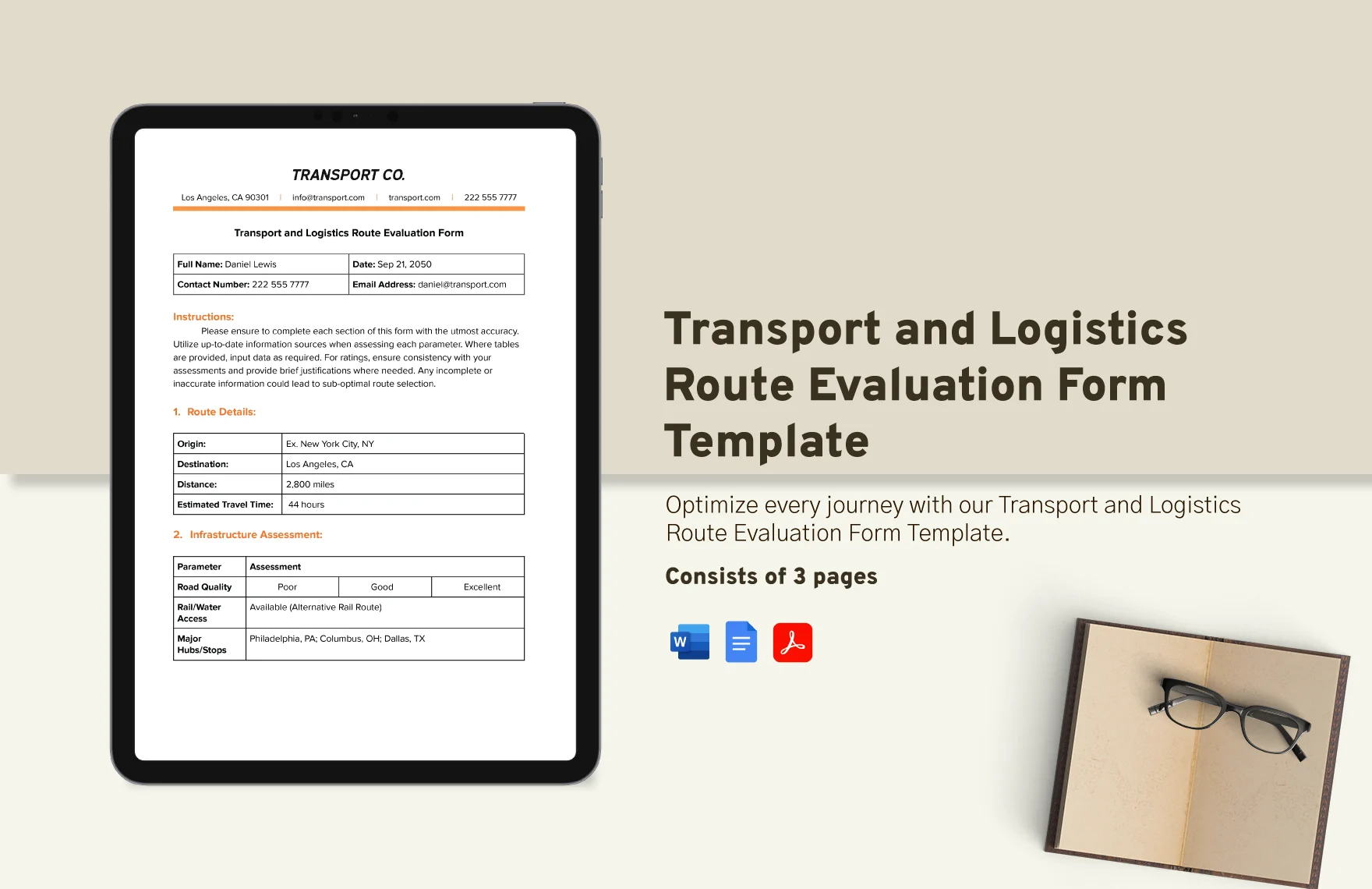
3. Sample Transportation & Travel Permission Form Template
4. Sample Transportation Consent Form Template
5. Sample Transportation Provider Vehicle Form Template
6. Sample Transportation Bus Form Template
What is a Transportation Form?
An Essential Tool for the Modern Traveler and Business
A transportation form, at its core, is a structured tool designed to capture, organize, and relay information pertaining to various modes and needs of transport. In today’s globalized world, the intricate web of travel, be it for leisure, business, or logistics, relies on organized systems to ensure efficiency, safety, and convenience. The transportation form serves as a cornerstone in this matrix.
Roots in Historical Documentation
Historically, the idea of documenting travel can be traced back to ancient civilizations where traders, explorers, and pilgrims would maintain logs or receive travel passes. These historical antecedents can be viewed as the primitive versions of today’s transportation forms, illustrating the perennial need for structured travel documentation.
Key Elements in a Transportation Form
While the specific components of a transportation form can vary based on its intended purpose, there are common elements to most:
- Personal Details: This section typically includes the traveler’s or shipper’s name, contact information, and sometimes, identification details.
- Transportation Mode: Whether by air, sea, rail, or road, indicating the method of transportation is crucial.
- Dates and Timing: Specifying when the transportation is needed, departure times, arrival times, or duration.
- Destinations and Stops: Where the journey starts, where it ends, and potential stops in between.
- Special Requirements: This could range from dietary preferences on a flight to special handling instructions for freight.
- Payment Information: For services that are charged, details regarding payment methods, amounts, and billing addresses are often included.
Applications and Varieties
Transportation forms are used across sectors and industries. Travel agencies, public transport bodies, shipping companies, airlines, schools, and hospitals represent just a slice of entities that regularly use these forms. The key is adaptability; the form must be tailored to meet the specific needs of its intended use.
Digital Evolution of the Transportation Form
With the digital revolution, many transportation forms have transitioned from paper-based to electronic formats. This transition offers numerous benefits including real-time data collection, automated data analysis, enhanced storage and retrieval capacities, and reduced environmental footprint.
How to Create a Transport Form?
The first step in creating an effective transportation form is to clearly define its purpose. Is it for a school’s daily transport system, a global logistics company, or perhaps for a travel agency? Once the objective is crystallized, the subsequent steps become more focused.
Platform Selection: Physical or Digital?
Historically, forms were paper-based. However, today’s digital age offers a plethora of tools for creating electronic forms. Platforms like Google Forms, SurveyMonkey, or industry-specific software can be utilized. The choice depends on the target audience, the scope of use, and the budget.
Designing the Layout
A form should be user-friendly. Group related fields together, utilize dropdown menus for common choices, and ensure that instructions are clear. If it’s a digital form, ensure responsiveness so it can be easily accessed via mobile devices.
Incorporate Essential Components
Make sure the form captures all necessary information. This might include personal details, transportation specifics, payment information, and any other relevant fields tailored to the form’s intended purpose.
Feedback and Iteration
Once a draft of the form is ready, test it among a small group. Gather feedback, identify pain points, and make the necessary adjustments. This iterative process ensures that the form is as effective and user-friendly as possible.
Embedding Security Protocols
If your form collects sensitive information, especially in a digital format, it’s imperative to incorporate security measures. Ensure data encryption, use secure servers, and stay updated with best practices in data protection.
Continuous Improvement and Updates
A transportation form isn’t a one-off task. As needs evolve and new challenges arise, regularly revisiting and updating the form ensures it remains relevant and efficient.
In summation, the transportation form, whether rooted in ancient travel logs or today’s digital platforms, plays a pivotal role in organizing the complex realm of travel and logistics. By understanding its essence and crafting it with care, one can create a tool that greatly enhances the transportation experience.
7. Sample Equipment Transportation Form Template
8. Sample Transportation Office Form Template
9. Sample Transportation Booking Form Template
10. Sample Transportation Waiver Form Template
11. Sample Transportation Authorization Form Template
12. Sample Transportation Travel Form Template
13. Sample Transportation Basic Form Template
14. Sample Transportation Pickup Form Template
15. Sample Transportation Simple Form Template
16. Sample Transportation Travel Request Form Template
17. Sample Transportation Student Form Template
18. Sample Transport Order Form Template
19. Sample Medical Transportation Form Template
20. Sample Transportation Editable Form Template
21. Sample Transportation Verification Form Template
22. Sample Transportation Permission Slip Form Template
23. Sample Athletic Transportation Form Template
What Are Different Types of Transportation Forms?
The Diversity of Transport Documentation
Transportation, as an industry, serves varied sectors, each with distinct requirements. From individual travelers to multinational logistics corporations, the essence of organized and efficient documentation cannot be overstated. Transportation forms, given their diverse applications, have evolved into specific types to cater to the myriad needs of these sectors. Let’s dive deep into this world of structured transport communication tools.
Public Transport Forms: Bridging Communities
Public transport is the lifeline of urban centers and sprawling cities worldwide. The forms associated with this sector are critical in gathering commuter details and feedback.
Commuter Registration Forms: These forms play a pivotal role in managing high commuter volumes, helping agencies tailor services like monthly passes, loyalty programs, or even track usage patterns.
Feedback and Suggestions: Essential for continuous improvement, these forms give passengers a platform to voice concerns, suggestions, or even commendations.
Freight and Logistics: The Backbone of Commerce
The efficient movement of goods is critical in our globalized economy. Forms in this sector ensure timely, safe, and precise delivery.
Shipping Request Forms: Vital for commerce, these capture shipment details—everything from item descriptions, dimensions, origin, and destination, to special handling instructions.
Damage and Insurance Claims: Ensuring accountability and enabling swift redressal, these forms document any damages incurred during transport.
Vehicle Rentals: Driving Personal Journeys
Vehicle rental forms ensure clarity between service providers and users, ensuring smooth, hassle-free rentals.
Rental Agreement Forms: These standardize terms of the rental, detailing everything from rental duration and costs to liabilities in case of damages.
Vehicle Check and Inspection Forms: By capturing the condition of vehicles at the start and end of a rental, these forms ensure fairness and transparency.
Air Travel: Soaring Above Boundaries
Air travel has transformed the way we perceive distance. Forms in this sector streamline processes and ensure passenger comfort.
Booking and Reservation Forms: These capture vital journey details, seat preferences, and special requirements, ensuring a tailored flying experience.
Baggage Claims and Issues: These forms streamline the often-tedious process of reporting and resolving baggage-related concerns.
Specialized Transport Needs: Catering to Niche Requirements
Certain sectors have niche transportation needs, necessitating specialized forms.
- Medical Transport Forms: Critical for emergency services, these forms record patient details, medical needs, and journey specifics, ensuring safe and timely medical transportation.
- School and Institutional Forms: Managing student transport requires meticulous organization, made possible through forms detailing routes, stops, emergency contacts, and any special requirements.
International Travel and Customs: Navigating Global Gateways
Cross-border travel and trade come with their own set of documentation needs, ensuring compliance with international norms and regulations.
Customs Declaration Forms: These are essential for travelers and traders, detailing items and goods being carried across borders. They serve as the basis for duties, taxes, and adherence to import/export regulations.
Transit and Travel Visas: As international travel often involves transiting through countries, these forms help travelers obtain necessary permissions and provide authorities with vital information.
The Digital Leap: Modern Forms for Modern Needs
With the advent of digital technologies, many forms have found a new avatar online. E-forms provide benefits like instant submissions, automated processing, and data analytics. Their environmental benefits also can’t be ignored, reducing the need for paper and associated logistics.
Conclusion: Forms – The Unsung Pillars of Transport
While often overlooked in the broader tapestry of the transport industry, forms serve as foundational pillars, ensuring efficiency, clarity, and organization. By understanding the various types of transportation forms, individuals, businesses, and agencies can better navigate the complex world of transport and logistics, ensuring smooth journeys, whether they’re across town or around the world.
Related Posts
Agreement Form Samples & Templates
Vehicle Inspection Forms Samples & Templates
Sample Employee Advance Forms
Sample Child Travel Consent Forms
Sample Testimonial Request Forms
Sample Employee Details Forms
Sample Divorce Forms
Sample Attestation Forms
Employee Performance Appraisal Form Templates
FREE 9+ Sample Presentation Evaluation Forms in MS Word
FREE 10+ School Admission Form Samples & Templates in MS Word | PDF
FREE 30+ Patient Consent Form Samples in PDF | MS Word
FREE 10+ Sample Sign Off Form Templates in PDF | MS Word
FREE 11+ Sample Medical Consultation Forms in PDF | MS Word
FREE 8+ Sample Donation Forms in PDF | MS Word

